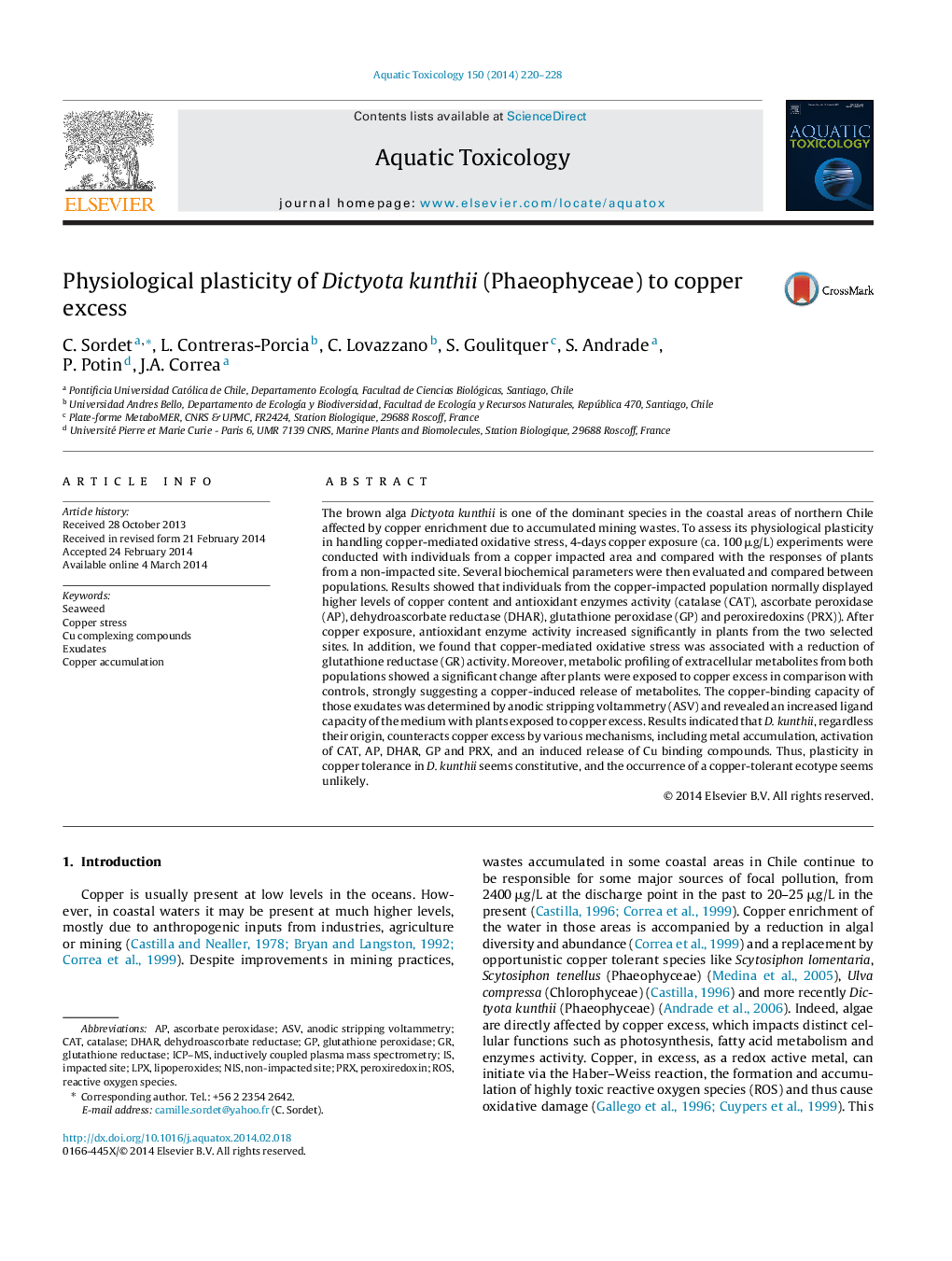| Article ID | Journal | Published Year | Pages | File Type |
|---|---|---|---|---|
| 4529285 | Aquatic Toxicology | 2014 | 9 Pages |
•We aimed at identifying copper tolerance mechanisms in D. kunthii (Phaeophyceae).•Copper resistance in D. kunthii is related to several mechanisms.•No interpopulation differences were observed in plants from contaminated-site or not.•Copper tolerance in D. kunthii is a constitutive trait.
The brown alga Dictyota kunthii is one of the dominant species in the coastal areas of northern Chile affected by copper enrichment due to accumulated mining wastes. To assess its physiological plasticity in handling copper-mediated oxidative stress, 4-days copper exposure (ca. 100 μg/L) experiments were conducted with individuals from a copper impacted area and compared with the responses of plants from a non-impacted site. Several biochemical parameters were then evaluated and compared between populations. Results showed that individuals from the copper-impacted population normally displayed higher levels of copper content and antioxidant enzymes activity (catalase (CAT), ascorbate peroxidase (AP), dehydroascorbate reductase (DHAR), glutathione peroxidase (GP) and peroxiredoxins (PRX)). After copper exposure, antioxidant enzyme activity increased significantly in plants from the two selected sites. In addition, we found that copper-mediated oxidative stress was associated with a reduction of glutathione reductase (GR) activity. Moreover, metabolic profiling of extracellular metabolites from both populations showed a significant change after plants were exposed to copper excess in comparison with controls, strongly suggesting a copper-induced release of metabolites. The copper-binding capacity of those exudates was determined by anodic stripping voltammetry (ASV) and revealed an increased ligand capacity of the medium with plants exposed to copper excess. Results indicated that D. kunthii, regardless their origin, counteracts copper excess by various mechanisms, including metal accumulation, activation of CAT, AP, DHAR, GP and PRX, and an induced release of Cu binding compounds. Thus, plasticity in copper tolerance in D. kunthii seems constitutive, and the occurrence of a copper-tolerant ecotype seems unlikely.
